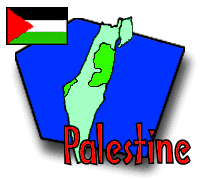Word of the Day: Sh'ish'malak? — "What is your name?"
Tech Fact of the Day: Administrative detainees
Person of the Day: Hisham Sharabati ![]()
Place of the Day: West Bank
Group Dispatch, December 13–14

Questions? Ask Anthony ![]() !
!
Return to Fast Facts
 |
 |
 |
 |
 |
|
Itinerary/ Journal |
Discussions |
About Palestine |
eDscape Projects |
Scrapbook |
|
|
|
|
|
|
|
Internet access while in Palestine was provided by PalNet. | |
Copyright 1997-2004 BikeAbout. All rights reserved.
